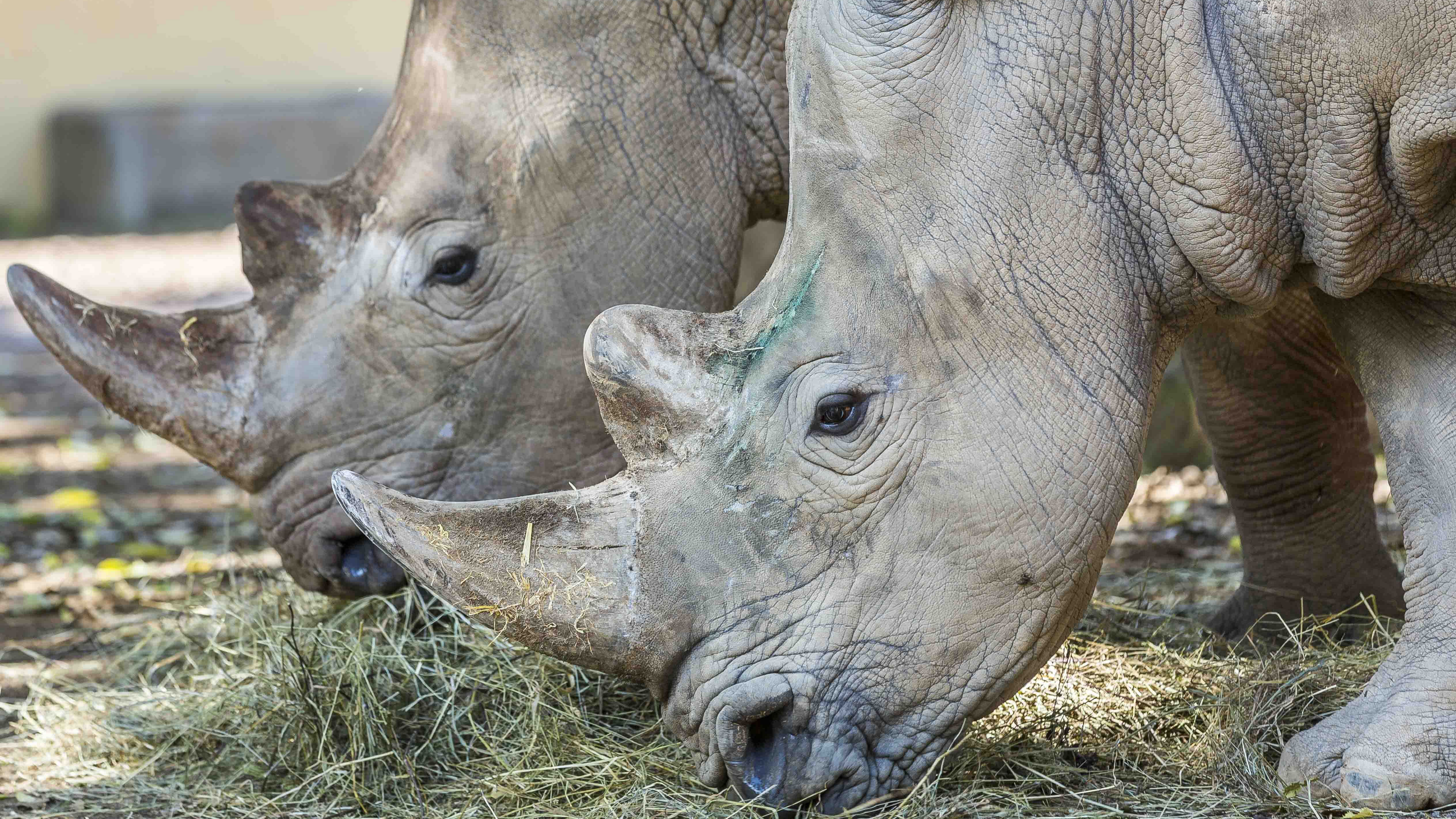04:41

Hidden away in this idyllic part of the English countryside is an unusual set of buildings. They look like ordinary cottages, fitting in with the rest of the small village of Wytham on the outskirts of Oxford. But, some of the research taking place here could go a long way in saving the world's rhino population.
This is the University of Oxford's Field Laboratory. Scientists here, along with a team at the Fudan University in Shanghai, have created a fake rhino horn using horse hair. They hope the product could one day flood the market and reduce the demand for real horns – which is a key reason the animals are being hunted.
Professor Fritz Vollrath, from the University of Oxford's Department of Zoology, is the co-lead author of the findings, which are published in the Scientific Report journal. In a tour around his unconventional science labs, the charismatic researcher told us why the study could be significant for the world's dwindling rhino numbers.
"What we found was that it was easy and cheap to mimic the rhino horn using horse hair, as the horse is very closely related to the rhino. The rhino is unique as its horn is actually just a tuft of hair that grows on its nose. It's tightly packed and glued together by fluids from sebaceous glands. What we've done is reproduce that with horse hair, which is very similar."
According to the World Wildlife Fund, at the start of the 20th century, 500,000 rhinos roamed around Africa and Asia. Today, there are around 30,000 globally, represented through 5 different species of the animal. Two of those – the Javan and Sumatran rhinoceroses – are critically endangered, with less than 80 of each species thought to be alive. Poaching of the animals, mainly for their horns, is one factor that has contributed to the steep declines in their population, as well as issues like habitat loss, natural disasters and disease.

Professor Fritz Vollrath outside his laboratory
Professor Fritz Vollrath outside his laboratory
How does 'the fake' work?
Hair from a horse's tail is glued together tightly with a silk-based filler, and the resulting bio-composite material is remarkably similar to an actual rhino horn, both in structure and chemical composition, according to the scientists. It can then be molded, cut and polished to look like a rhino horn too.
From an environmental perspective, the fake alternative could help reduce the demand for rhino horns, but it also has big business implications. Demand for the product is rampant in some parts of the world, mainly for its use in traditional medicine in parts of Asia and Africa. Professor Vollrath estimates one rhino horn could fetch anywhere in the region of $50,000-60,000.
"It's thought to have many benefits, especially as an aphrodisiac. So, in some places, people are paying $1,000 for a few cups of rhino horn tea. But, in reality, the sellers are just cutting up a bit of Viagra and adding that to the mixture. Imagine that, paying thousands of dollars for a bit of Viagra!"
Chinese researchers played a key part in this latest study looking for an alternative, according to Vollrath. But, their plans do face some challenges. Flooding the market with an alternative might be unlikely to stop rhinos being hunted and poached unless it significantly brings down the cost of horns. That could depend on supply and as Vollrath points out, this study is only hoping to form the basis for "others to develop the technology further and make products that can be introduced to the market."
It seems a relatively simple solution to a problem that remains a global concern. For the thousands of rhinos still roaming our planet, it could also prove a vital lifeline.